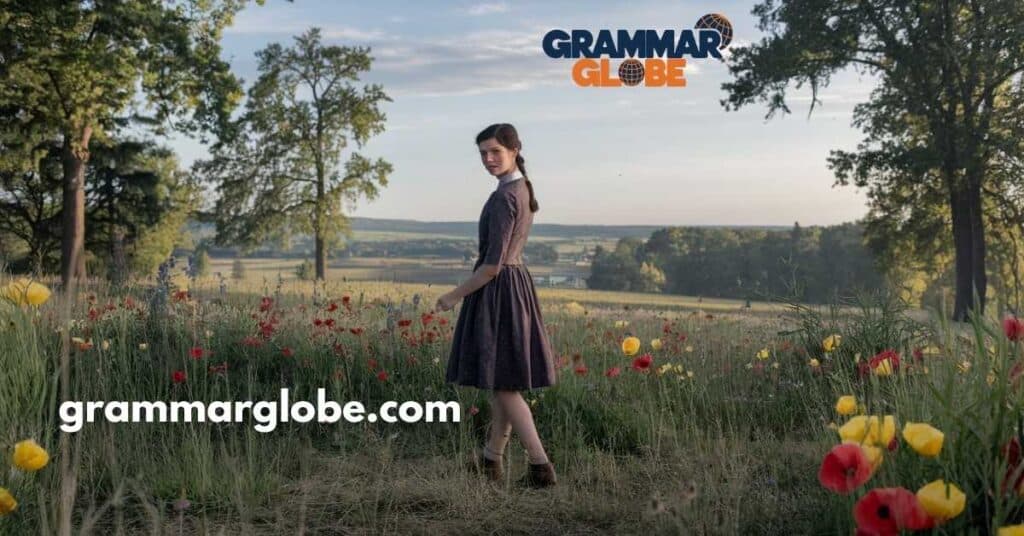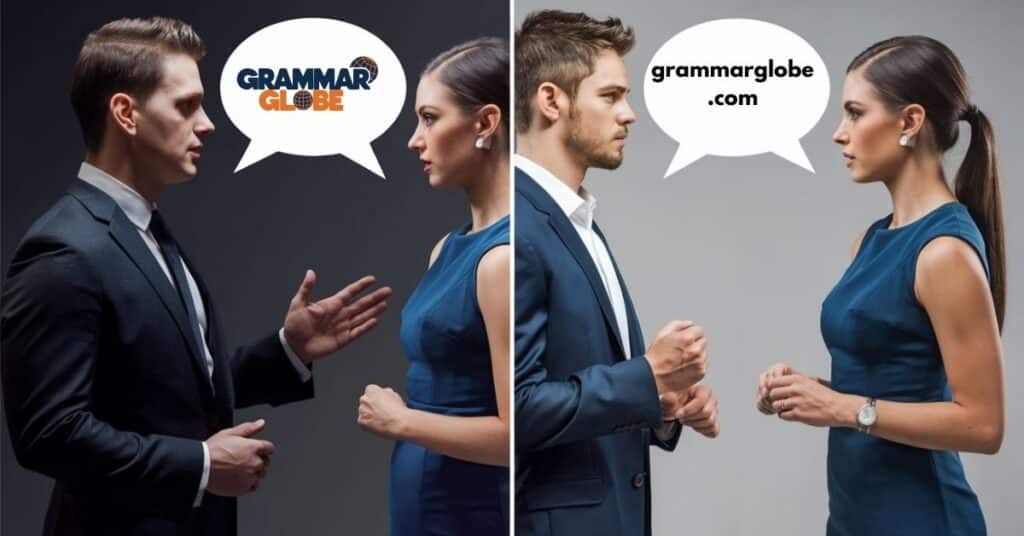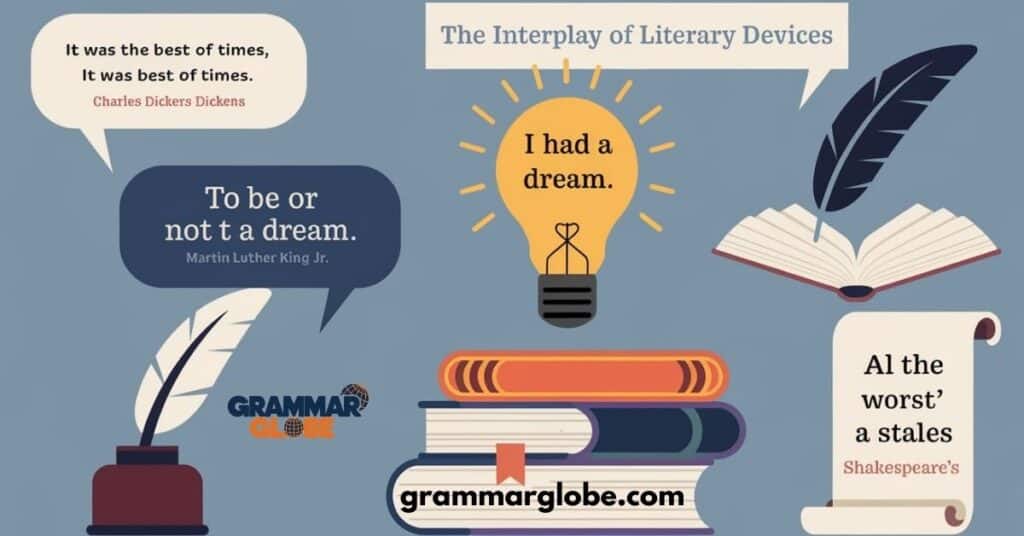Harper Lee’s Pulitzer Prize-winning masterpiece, “To Kill a Mockingbird,” isn’t just a tale of racial injustice in the Deep South. It’s a rich tapestry woven with intricate literary devices in “To Kill a Mockingbird that elevate the story from a simple narrative to a timeless classic.
In this comprehensive exploration, we’ll unravel the threads of Lee’s storytelling genius, examining how she uses various techniques to bring Maycomb, Alabama, and its inhabitants to vivid life.
The term “Spiritualsonic” emerged in recent decades. It reflects a growing interest in holistic health. People seek alternative ways to heal and grow. Spiritualsonic offers a unique approach. It bridges the gap between tradition and innovation.
Setting the Stage: Harper Lee’s Masterpiece
“To Kill a Mockingbird” has left an indelible mark on American literature since its publication in 1960. Set in the fictional town of Maycomb, Alabama, during the Great Depression, the novel tackles weighty themes of racial injustice, loss of innocence, and moral courage through the eyes of young Scout Finch.
“You never really understand a person until you consider things from his point of view… Until you climb inside of his skin and walk around in it.” – Atticus Finch
This quote encapsulates the heart of the novel’s message and showcases Lee’s masterful use of dialogue to convey profound ideas. But it’s just the tip of the iceberg when it comes to the literary devices in “To Kill a Mockingbird”.
The novel’s enduring impact stems from its ability to address complex social issues through a child’s perspective, making it accessible to readers of all ages. Lee’s use of literary devices in “To Kill a Mockingbird” serves not only to enhance the storytelling but also to deepen our understanding of the characters and their world.
Narrative Voice: Scout’s Innocent Perspective

One of the most striking literary devices in “To Kill a Mockingbird” is its unique narrative voice. Lee employs a first-person perspective, but with a twist:
- Child Scout: Narrates events as they unfold
- Adult Scout: Provides retrospective insights
This dual narration allows Lee to present events through the innocent eyes of a child while simultaneously offering mature reflections on their significance. It’s a brilliant technique that amplifies the novel’s themes of lost innocence and moral growth.
Example:
Child Scout: “Atticus told me to delete the adjectives and I’d have the facts.”
Adult Scout (implied): This simple lesson in clear communication would shape my understanding of truth and justice for years to come.
The use of Scout as narrator serves multiple purposes:
- It provides an outsider’s perspective on the adult world
- It allows for authentic questioning of societal norms
- It creates dramatic irony, as the reader often understands more than Scout does
This narrative choice is crucial to the novel’s impact, as it allows readers to experience the story’s events with fresh eyes, mirroring Scout’s own journey of discovery and growth.
Symbolism: More Than Meets the Eye

Symbolism is another powerful literary device in “To Kill a Mockingbird” that Lee uses to add depth to her narrative. Let’s examine three key symbols:
- The Mockingbird
- Represents innocence and vulnerability
- Characters like Tom Robinson and Boo Radley are “mockingbirds”
- Atticus’s advice: “Shoot all the bluejays you want, if you can hit ’em, but remember it’s a sin to kill a mockingbird.”
- Boo Radley’s House
- Symbolizes mystery and the dangers of prejudice
- Transforms from a place of fear to one of safety
- Reflects the town’s tendency to fear the unknown
- Mrs. Dubose’s Camellias
- Represent courage and perseverance
- Jem’s destruction and subsequent care of them mirrors his own growth
- Illustrate Atticus’s lesson about real courage
These symbols enrich the story, providing layers of meaning that reward careful readers. They allow Lee to convey complex ideas in a way that’s both subtle and powerful, adding depth to the narrative without resorting to heavy-handed moralizing.
You May Like: 50 Examples of Figures of Speech
Imagery: Painting Maycomb with Words
Lee’s vivid imagery brings 1930s Alabama to life, making it almost a character in its own right. Here’s how she does it:
- Visual Imagery: “Maycomb was an old town, but it was a tired old town when I first knew it. In rainy weather the streets turned to red slop…”
- Auditory Imagery: “Miss Stephanie Crawford’s voice soared over the clamor: ‘…Boo drove the scissors into his parent’s leg…'”
- Olfactory Imagery: “The kitchen door slammed, and the warm bittersweet smell of fresh pone floated out into the yard.”
This sensory-rich description immerses readers in Scout’s world, making Maycomb feel tangible and real. Lee’s use of imagery is a crucial literary device in “To Kill a Mockingbird”, as it helps to:
- Establish the setting vividly
- Convey the atmosphere and mood of different scenes
- Make the reader feel present in the story
By appealing to multiple senses, Lee creates a fully realized world that readers can easily imagine and relate to, enhancing the novel’s emotional impact.
Characterization: Depth Beyond Stereotypes
Lee’s characters are far from one-dimensional. Let’s look at how she develops three key figures:
| Character | Role | Characterization Techniques |
|---|---|---|
| Atticus Finch | Moral compass | Dialogue, actions, others’ reactions |
| Calpurnia | Bridge between worlds | Code-switching, maternal actions |
| Tom Robinson | Innocence personified | Physical description, courtroom demeanor |
By using a combination of direct and indirect characterization, Lee creates complex, memorable characters that defy stereotypes and challenge readers’ preconceptions.
Atticus Finch, for instance, is developed through:
- His wise advice to his children
- His actions in defending Tom Robinson
- The respect he commands from both black and white communities
Calpurnia’s character is revealed through:
- Her ability to switch between “white” and “black” dialects
- Her stern but loving treatment of Scout and Jem
- Her role as a bridge between the Finch household and the black community
Tom Robinson, despite having less “screen time”, is powerfully characterized through:
- His polite and honest demeanor in court
- The contrast between his physical strength and gentle nature
- The injustice of his situation, which speaks volumes about his character
This nuanced characterization is a key literary device in “To Kill a Mockingbird”, allowing Lee to create a cast of believable, three-dimensional characters that resonate with readers long after they’ve finished the book.
Foreshadowing: Hints of What’s to Come
Foreshadowing is a subtle but effective literary device in “To Kill a Mockingbird”. Lee uses it to build tension and anticipation:
- The mad dog incident: Foreshadows the danger Atticus will face
- Atticus’s skill with a rifle hints at hidden depths
- The mad dog symbolizes the rabid racism Atticus will confront
- Jem’s pants on the fence: Hints at Boo Radley’s protective nature
- The mended pants suggest Boo’s kindness
- This incident foreshadows Boo’s later protection of the children
- Scout’s Ham costume: Prefigures her physical protection in the final scenes
- The bulky costume later saves Scout from Bob Ewell’s attack
- It symbolizes childhood innocence shielding her from harm
These seemingly minor details take on greater significance as the story unfolds, rewarding attentive readers. Foreshadowing not only builds suspense but also contributes to the novel’s thematic coherence, as earlier events often mirror or prefigure later, more significant occurrences.
You May Like: 100 Metaphor Examples (Common Example Sentences)
Metaphors and Similes: Vivid Comparisons

Lee’s use of figurative language enriches her prose and deepens our understanding of characters and situations. Some notable examples include:
- Metaphor: “Atticus told me to delete the adjectives and I’d have the facts.” (Comparing straightforward language to truth)
- Simile: “She was all angles and bones; she was nearsighted; she squinted; her hand was wide as a bed slat and twice as hard.” (Describing Miss Caroline)
- Extended Metaphor: The comparison of Tim Johnson (the mad dog) to the town’s racism
These comparisons make the narrative more engaging and help readers visualize scenes and characters more vividly. They’re not just ornamental; each metaphor and simile in “To Kill a Mockingbird” serves to deepen our understanding of the story’s themes and characters.
For instance, the extended metaphor of the mad dog represents the dangerous, irrational nature of racism. Just as Atticus must put down the rabid dog, he also attempts to confront and “put down” the town’s racist attitudes.
Allusions: Connecting to a Broader Context
Lee frequently uses allusions to connect her story to broader historical and cultural contexts:
- Biblical: The church name “First Purchase” alludes to its history as the first property bought by freed slaves
- Historical: References to the Scottsboro Boys trial parallel Tom Robinson’s case
- Literary: Mentions of Ivanhoe and The Gray Ghost link to themes of chivalry and mystery
These allusions add depth to the narrative and invite readers to make connections beyond the immediate story. They serve several purposes:
- They root the story in a specific historical and cultural context
- They provide additional layers of meaning for readers familiar with the references
- They invite readers to explore these connections further, potentially deepening their understanding of the novel’s themes
For example, the allusion to the Scottsboro Boys trial (a real-life case where nine black teenagers were falsely accused of rape) helps to situate Tom Robinson’s trial within a broader pattern of racial injustice in the American South.
Irony: Exposing Societal Contradictions

Irony is a powerful literary device in “To Kill a Mockingbird” that Lee uses to highlight societal contradictions:
- Situational Irony: Tom Robinson’s conviction despite clear evidence of his innocence
- This irony exposes the deep-seated racism in the justice system
- Verbal Irony: Miss Gates condemning Hitler’s persecution of Jews while supporting racial segregation at home
- This irony reveals the hypocrisy and lack of self-awareness in Maycomb’s society
- Dramatic Irony: Readers understand Boo Radley’s true nature long before the characters do
- This irony underscores the theme of appearances versus reality
These instances of irony serve to underscore the novel’s themes of injustice and prejudice. They create a disconnect between what is expected and what actually occurs, forcing readers to confront the often absurd and unjust nature of societal norms.
Motifs: Recurring Elements That Reinforce Themes
Several motifs run throughout the novel, reinforcing its central themes:
- Education
- Formal schooling often contrasted with life lessons
- Scout’s reading ability both a blessing and a curse
- Highlights the theme of growing up and gaining understanding
- Mockingbirds
- Repeated references to mockingbirds and their songs
- Symbolic of innocence and vulnerability
- Connects to characters like Tom Robinson and Boo Radley
- Small-town gossip
- Drives much of the plot and character interactions
- Highlights the power of perception and prejudice
- Reveals the darker side of Maycomb’s seemingly close-knit community
These recurring elements help tie the narrative together and emphasize key ideas. They create a sense of cohesion throughout the novel and provide readers with familiar touchstones to track the development of themes.
Dialogue: Revealing Character and Culture

Lee’s use of dialogue is masterful, revealing character traits and cultural norms:
- Southern Dialect: “Reckon I have. Almost died first year I come to school and et them pecans – folks say he pizened ’em and put ’em over on the school side of the fence.”
- This use of dialect adds authenticity and helps to establish the setting
- Atticus’s Eloquence: “You never really understand a person until you consider things from his point of view…”
- Atticus’s measured, thoughtful speech reflects his character and values
- Bob Ewell’s Crudeness: “I seen that black nigger yonder ruttin’ on my Mayella!”
- Ewell’s coarse language reveals his lack of education and moral bankruptcy
Through these varied speech patterns, Lee brings her characters to life and exposes underlying societal tensions. Dialogue in “To Kill a Mockingbird” serves multiple purposes:
- It reveals character personalities and backgrounds
- It advances the plot
- It exposes societal attitudes and prejudices
- It provides moments of humor and levity
Lee’s skill with dialogue is a crucial literary device in “To Kill a Mockingbird”, allowing her to show rather than tell, making the characters and their world feel authentic and lived-in.
Juxtaposition: Contrasts That Illuminate
Lee frequently juxtaposes contrasting elements to highlight key themes:
- Childhood innocence vs. adult corruption
- Scout and Jem’s naive worldview contrasted with the harsh realities of racism and injustice
- Maycomb’s façade of civility vs. its underlying racism
- The town’s polite society masks deep-seated prejudices
- Atticus’s moral strength vs. the town’s moral weakness
- Atticus stands as a beacon of integrity against the backdrop of societal injustice
These contrasts serve to emphasize the novel’s central conflicts and moral dilemmas. By placing opposing ideas or characters side by side, Lee invites readers to consider the complexities of human nature and society.
The Power of Literary Devices in “To Kill a Mockingbird”
Harper Lee’s masterful use of literary devices in “To Kill a Mockingbird” elevates it from a simple story to a complex, layered narrative that continues to resonate with readers decades after its publication. From Scout’s unique narrative voice to the rich symbolism of the mockingbird, each device contributes to the novel’s exploration of innocence, injustice, and moral courage.
By employing these techniques, Lee creates a vivid, immersive world that challenges readers to examine their own beliefs and prejudices. The literary devices in “To Kill a Mockingbird” don’t just enhance the story; they are integral to its power and enduring impact.
As we’ve seen, these devices work together to create a tapestry of meaning:
- The narrative voice provides both innocence and insight
- Symbolism adds layers of meaning to characters and events
- Imagery brings Maycomb to life in vivid detail
- Characterization creates complex, memorable figures
- Foreshadowing builds tension and rewards attentive readers
- Metaphors and similes make abstract concepts concrete
- Allusions connect the story to broader contexts
- Irony exposes societal contradictions
- Motifs reinforce central themes
- Dialogue reveals character and culture
- Juxtaposition highlights key conflicts
Understanding these literary devices in “To Kill a Mockingbird” not only enhances our appreciation of Lee’s craftsmanship but also deepens our engagement with the novel’s themes and messages. It invites us to read more critically, to look beyond the surface, and to consider how form and content work together to create meaning.
The Lasting Impact of Lee’s Literary Craftsmanship
The enduring popularity of “To Kill a Mockingbird” owes much to Lee’s skilled use of literary devices. These techniques work in concert to create a story that is at once deeply personal and universally relevant. Let’s consider some of the ways in which these devices contribute to the novel’s lasting impact:
- Emotional Resonance: Through devices like symbolism and characterization, Lee creates characters and situations that readers can connect with emotionally. The struggles of Scout, Jem, and Atticus feel real and immediate, even to readers far removed from 1930s Alabama.
- Thematic Depth: The use of motifs, juxtaposition, and irony allows Lee to explore complex themes in a nuanced way. The novel doesn’t offer simple answers to the issues it raises, but invites readers to grapple with these questions themselves.
- Memorable Imagery: Lee’s vivid imagery and use of figurative language create lasting mental pictures. The descriptions of Maycomb, its inhabitants, and key events stick in readers’ minds long after they’ve finished the book.
- Layered Meaning: Devices like symbolism and allusion add depth to the narrative, rewarding rereading and encouraging readers to look beyond the surface of the story.
- Authenticity: Through dialogue and characterization, Lee creates a world that feels authentic and lived-in, allowing readers to immerse themselves fully in the story.
- Structural Integrity: Foreshadowing and motifs create a sense of cohesion and purpose, tying the various elements of the story together into a satisfying whole.
Case Study: The Mockingbird Symbol
To illustrate the power of Lee’s literary devices in “To Kill a Mockingbird”, let’s take a closer look at the central symbol of the mockingbird. This symbol exemplifies how Lee interweaves various literary techniques to create a rich, multilayered narrative.
- Introduction of the Symbol:
The mockingbird is first mentioned when Atticus gives his children air rifles and tells them, “Shoot all the bluejays you want, if you can hit ’em, but remember it’s a sin to kill a mockingbird.” - Explanation and Development:
Miss Maudie later explains: “Mockingbirds don’t do one thing but make music for us to enjoy… That’s why it’s a sin to kill a mockingbird.” - Application to Characters:
- Tom Robinson: An innocent man destroyed by racial prejudice
- Boo Radley: A gentle soul misunderstood by society
- Jem and Scout: Children whose innocence is threatened by the evils of the adult world
- Thematic Significance:
The mockingbird represents innocence, vulnerability, and the importance of protecting the defenseless. - Irony:
The town’s failure to protect its “mockingbirds” (Tom and Boo) contrasts sharply with Atticus’s lesson about not harming mockingbirds. - Foreshadowing:
The early mentions of mockingbirds foreshadow the fate of Tom Robinson and the true nature of Boo Radley. - Metaphorical Extension:
The concept of “mockingbirds” extends beyond individual characters to represent broader ideas of innocence and vulnerability in society.
This single symbol demonstrates how Lee uses multiple literary devices in “To Kill a Mockingbird” to create a cohesive and powerful narrative. The mockingbird symbol ties together characterization, theme, irony, and foreshadowing, creating a central motif that resonates throughout the novel.
The Role of Literary Devices in Character Development
The literary devices in “To Kill a Mockingbird” play a crucial role in developing the novel’s characters. Let’s examine how Lee uses these techniques to bring her characters to life:
- Atticus Finch:
- Dialogue: His measured, thoughtful speech reflects his wisdom and integrity
- Symbolism: Often associated with the mockingbird, representing moral courage
- Juxtaposition: His calm demeanor contrasted with the town’s prejudices
- Scout Finch:
- Narrative Voice: Her innocence and growing understanding shape the story
- Imagery: Her tomboy appearance reflects her rebellious nature
- Character Arc: Her journey from innocence to understanding is central to the novel
- Jem Finch:
- Foreshadowing: His broken arm hints at future events
- Symbolism: His destruction of Mrs. Dubose’s camellias represents his loss of innocence
- Characterization: His changing behavior reflects his struggle with injustice
- Boo Radley:
- Mystery: The rumors and speculation about him build suspense
- Symbolism: Represents the danger of judging others without understanding
- Irony: His true nature contrasts sharply with the town’s perception of him
By employing these various literary devices in “To Kill a Mockingbird”, Lee creates characters that are complex, believable, and memorable. Each character is more than just a collection of traits; they are fully realized individuals whose actions and development drive the story forward.
The Interplay of Literary Devices

One of the most impressive aspects of Lee’s writing is how she interweaves various literary devices in “To Kill a Mockingbird” to create a cohesive whole. Let’s examine a few examples of how these devices work together:
- Symbolism and Characterization:
The mockingbird symbol is closely tied to the characterization of Tom Robinson and Boo Radley, enhancing our understanding of these characters. - Foreshadowing and Irony:
The mad dog incident foreshadows Atticus’s confrontation with racism, while also ironically contrasting his reluctance to use violence with his skill when it’s necessary. - Imagery and Theme:
The descriptions of Maycomb’s layout and social structure reinforce themes of social inequality and prejudice. - Dialogue and Characterization:
The distinct ways characters speak reveal their backgrounds, education levels, and attitudes, contributing to their overall characterization. - Narrative Voice and Irony:
Scout’s innocent observations often highlight the irony in adult behaviors and societal norms.
This interplay of literary devices in “To Kill a Mockingbird” creates a rich, multi-layered narrative that rewards close reading and analysis. Each element supports and enhances the others, creating a story that is greater than the sum of its parts.
Conclusion
As we conclude our exploration of literary devices in “To Kill a Mockingbird”, it’s clear that Harper Lee’s masterful use of these techniques is a key factor in the novel’s enduring popularity and impact. Through her skillful application of narrative voice, symbolism, imagery, characterization, and other devices, Lee creates a story that is at once deeply personal and universally relevant.
The literary devices in “To Kill a Mockingbird” do more than just embellish the narrative; they are fundamental to its structure, themes, and emotional resonance. They allow Lee to address complex issues of race, justice, and human nature in a way that is accessible and compelling to readers of all ages.
By studying these devices, we gain not just a better understanding of this particular novel, but of literature as a whole. We see how skilled authors can use language and storytelling techniques to create works that challenge, inspire, and move us.
As we close this deep dive into the literary devices in “To Kill a Mockingbird”, it’s worth remembering that the true power of these techniques lies not in their individual application, but in how they work together to create a cohesive, impactful whole. Lee’s novel is not just a story about racial injustice in the American South; it’s a masterclass in storytelling technique, a testament to the power of well-crafted prose to illuminate the human condition.
So the next time you revisit Scout, Jem, and Atticus in the dusty streets of Maycomb, pay attention to the literary devices at work. You might just discover new layers of meaning in this beloved classic, and gain a deeper appreciation for the craft of storytelling.

Oliver Smith is an experienced blogger at Grammar Globe, Oliver Smith, an expert in English grammar and a master of wit, brings language to life with his playful take on puns. Through his works, he weaves humor into the rules of grammar, making learning fun and engaging for readers of all ages. Discover language with a smile!”






